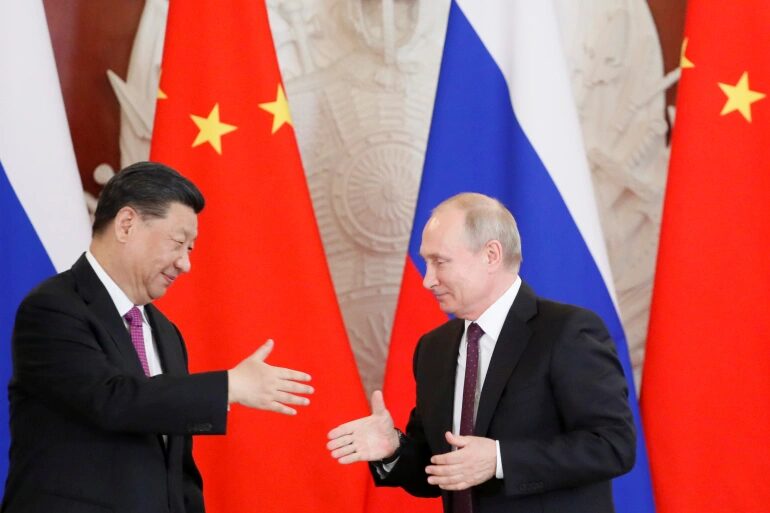
© Al Jazeera
"We" used to think that Russia's economy was the equivalent of a small European country. Never before has an economy's importance been so grossly misjudged. French economist Jacques Sapir explains what happened (44:13)
To him
"the war made us realize that the Russian economy is considerably more important than we thought". He says that a big reason for this misjudgment is exchange rates. If you compare Russia's GDP by converting from rubles to $, you indeed get an economy the size of Spain's.
However this is the worst possible way of comparing the size of economies. A slightly more accurate way is to adjust for PPP (
purchasing power parity.)
When you do so, you already realize that
Russia's economy is actually more like the size of Germany's.BUT you also need to take something else into account: "What is the share of the service sector versus the share of the commodities & industrial sector?" To Sapir the service sector is today vastly overvalued in the world compared with the industrial sector and commodities.
He says that when you adjust for this Russia's economy is vastly
bigger than Germany's.His estimate is that
Russia represents in fact maybe "5% or 6% of the world's economy", almost double the size it's normally estimated at on a PPP basis.This crisis and the pandemic is making us realize that we used to take manufacturing, the industry and commodities for granted, i.e. an antiquated side of the economy compared to shiny new "services".
It's also very interesting to revalue China's economy through that lens. If we look at the Chinese economy simply based on exchange rates, it is a $17.7 trillion economy to the U.S.'s $23 trillion.
However, if we just look at it on a PPP basis we realize it is already an almost $27 trillion economy. This means China's economy is already close to 20% larger than the U.S.'s. Let's also revalue it by assuming that the service sector holds much less value than previously thought.
The
service sector is about 54.5% of China's GDP which is even
less than in Russia (at 56.27%).
This means that if we roughly apply Sapir's ratio for Russia to China, we're in fact looking at the
Chinese economy being probably about 30% of the world's economy on a PPP basis instead of the 18% it's currently estimated at!
All in all, this means that China and Russia's economies combined are in fact likely about 35% of the world's economy when taking PPP into account as well as compensating for the over-valuation of the service sector.
The
service sector accounts for roughly 77% of the U.S. economy and 70% of the
EU's economy.
This means that conversely, the U.S. and EU's economies are overvalued today.Consequently, while
people think that the US + the
EU make up about 30% of the world's economy on a PPP basis. This is vastly overvalued since their service sector is such an important share of their economies.
To conclude all this might end up making us realize that
the Chinese + Russian economies combined are in fact far larger than those of the West. Maybe as much as 40% larger if we assume US + EU is in fact maybe just 25% of the world's economy vs 35% for China + Russia.
And that's not to mention the
fraudulent economic statistics running rampant in the US and EU to prop up their economic illusion of controlling the world.
Why is this important? First people need to learn about
Western imposed system onto the world called "Unequal exchange" through Western financial imperialism.
Russia and China are ending it.
Reader Comments
to our Newsletter